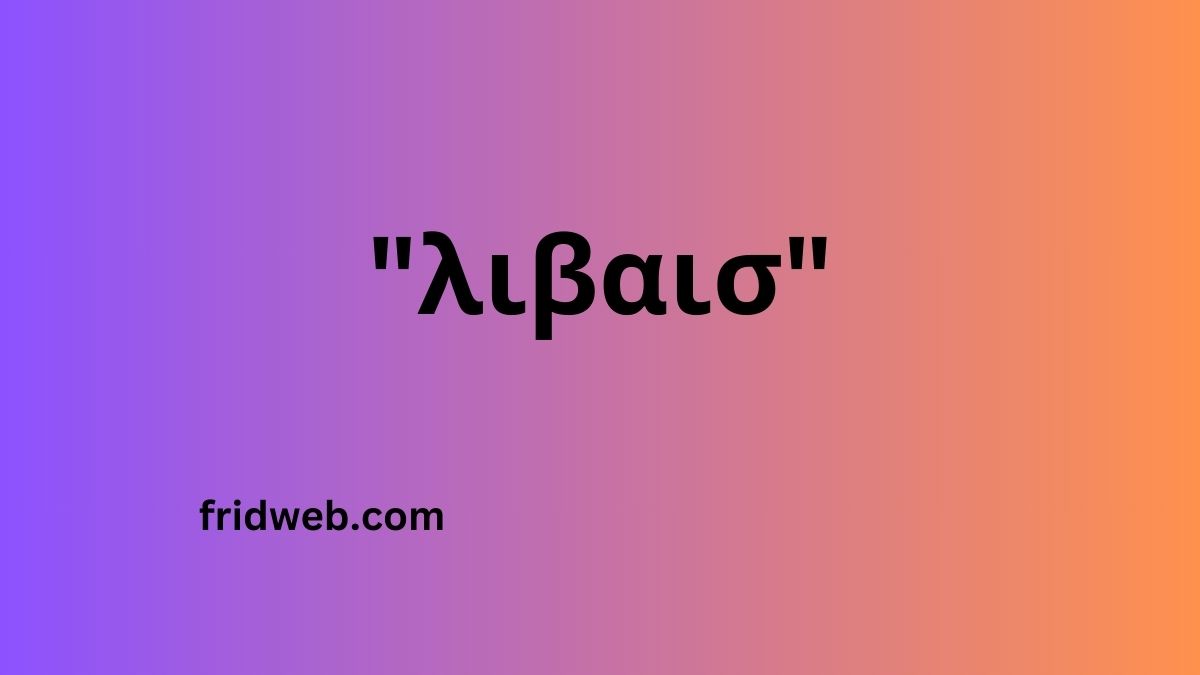Lifestyle
Longboard dance: Moves, music, risk elevate a skating hybrid

Longboard dance is a hybrid form of skateboarding that combines the fluidity and grace of dance with the adrenaline rush of skateboarding. It is a sport that requires a great deal of skill, coordination, balance, and creativity. Longboard dance has gained popularity in recent years, with enthusiasts practicing and performing all over the world. This article will explore the moves, music, and risks that make longboard dance such an exciting and captivating activity.
Moves
Longboard dance is all about the moves. It is a form of freestyle skateboarding that emphasizes fluidity, style, and creativity. Skaters use a variety of moves to create a dance-like routine on their longboards. Some of the most popular moves in longboard dance include cross steps, pivots, pirouettes, and manuals.
Cross steps involve moving your feet across the board in a fluid motion while maintaining your balance. Pivots are turns made on the front or back trucks of the board. Pirouettes are spins performed on the back truck of the board, while manuals involve balancing on the back wheels of the board while rolling forward.
Longboard dancers often combine these moves to create unique and intricate routines. The goal is to make the routine look effortless and graceful, while also demonstrating technical skill and control.
Music
Music is an essential component of longboard dance. The right music can help set the tone for the routine and inspire the skater to perform at their best. Longboard dancers often choose music that matches the mood and style of their routine.
Some dancers prefer upbeat and energetic music that matches the fast-paced nature of their moves. Others choose slower, more mellow music that allows them to showcase their fluidity and grace. Some dancers even incorporate the music into their routine, using it to accentuate their moves and add an extra layer of creativity.
Risk
Like any sport, longboard dance comes with a certain amount of risk. Skaters are performing intricate and technical moves on a board that is moving at high speeds. Falls and injuries are a real possibility, and longboard dancers must take precautions to minimize the risk of injury.
One of the biggest risks in longboard dance is falling off the board. Skaters must maintain their balance while performing complex moves, which can be challenging at high speeds. Wearing the right safety gear, such as a helmet and knee pads, can help protect against injury in the event of a fall.
Another risk in longboard dance is colliding with obstacles or other skaters. Longboard dancers often perform in tight spaces, such as skate parks or city streets. Skaters must be aware of their surroundings and take steps to avoid collisions.
Elevate
Longboard dance is a sport that elevates both the skater and the audience. Skaters who master the art of longboard dance can create breathtaking routines that are both technically impressive and aesthetically pleasing. The fluidity and grace of the skater’s movements can be mesmerizing, and the energy and excitement of the performance can be contagious.
Longboard dance can also elevate the audience. Watching a skilled longboard dancer can be a thrilling and inspiring experience. It can motivate viewers to pursue their own passions and push themselves to new levels of creativity and skill.
Conclusion
Longboard dance is a sport that combines the thrill of skateboarding with the grace and creativity of dance. Skaters use a variety of moves to create intricate and fluid routines, set to music that matches their style and mood. While longboard dance comes with certain risks, the rewards are well worth it. Skaters who master this hybrid form of skating can create performances that are both technically impressive and aesthetically pleasing, inspiring and exciting audiences around the world.

Lifestyle
Yenişaak: Embracing Tradition in a Modern World

Introduction
Traditions are special in maintaining cultural identity in a world when things are changing all the time. A tradition that has endured over time is “yenişaak.” This article examines the origins, cultural significance, and worldwide reach of yenişaak, examining its impact on different facets of life.
Historical Roots
With its deep historical origins, Yenişaak may be traced back to ancient customs. The intriguing etymology of the phrase has changed throughout centuries, keeping its essential meaning while adjusting to new circumstances.
Cultural Impact
Cultural norms and values are shaped by yenişaak, an integral part of daily living that holds significant importance in traditional activities. Its incorporation into modern culture emphasises how dynamic this ancient custom is.
Yenişaak in Everyday Life
Everyday activities and lifestyle decisions are influenced by yenişaak, which blends in perfectly. It influences more than just rituals; it adds to a distinct way of life.
The Global Appeal
What was once limited to a certain area is now recognised and adopted globally, overcoming national boundaries. Yenişaak’s popularity on a worldwide scale indicates its universal significance.
Yenişaak’s Influence on Fashion
In terms of style, yenişaak takes the form of both traditional clothing and contemporary adaptations. Enticed by its singularity, the fashion industry infuses yenişaak aspects into modern designs.
Yenişaak in Art and Music
Music and visual arts frequently reflect subtle cultural differences. The way that Yenişaak is portrayed in art and how it inspires musical compositions demonstrate how tradition and innovation can coexist peacefully.
Yenişaak and Technology
Yenişaak still has a significant internet following and affects tech advancements in the digital age. Social networking sites turn become places where fans of yenişaak may interact and exchange stories.
Yenişaak Festivals and Celebrations
The calendar of yenişaak aficionados is filled with annual events and distinctive celebrations. These festivities highlight this cultural tradition’s intrinsic liveliness and diversity.
Yenişaak and Cuisine
A sensory feast is provided by the fusion of yenişaak and culinary traditions. A lasting impact on the culinary scene, yenişaak is known for both its traditional recipes and its influence on international cuisine.
Challenges and Criticisms
Not impervious to disputes, yenişaak encounters objections and misperceptions. It is imperative to tackle these obstacles in order to promote a deeper comprehension of this custom.
Future Outlook
Examining the possible development of yenişaak offers understanding of its anticipated influence on the international scene. The ability of yenişaak to adapt guarantees its continuous relevance in a world that is constantly changing.
Embracing Yenişaak: Personal Stories
Personal accounts provide us with a more profound comprehension of the effects that yenişaak has on people. Narratives of metamorphosis and camaraderie highlight the intrinsic value of this ancient custom.
Yenişaak and Sustainable Practices
As environmental concerns gain more attention globally, yenişaak’s contribution to sustainability becomes increasingly important. The custom supports environmentally beneficial activities and helps create a more sustainable future.
Conclusion
yenişaak is proof of the continuing value of tradition. Its impact on everything from technology to fashion provides a clear image of a tradition that acclimates to the modern era with grace.
FAQ’s
Is yenişaak only limited to a specific region?
No, yenişaak has become globally recognised and is not limited by geography.
What controversies surround yenişaak?
Yenişaak could be subject to criticism, most of which stem from false beliefs. Taking these issues up front is essential to a complex comprehension.
How has yenişaak influenced modern fashion?
Yenişaak has made a lasting impression on the fashion world by fusing traditional clothing with contemporary ideas.
Are there specific festivals dedicated to yenişaak?
Indeed, there are yearly gatherings and distinctive festivities that showcase the liveliness of yenişaak.
Can yenişaak coexist with sustainable practices?
Indeed, yenişaak supports environmentally beneficial behaviours and helps to create a more sustainable future.
Lifestyle
How to Make Him Jealous: A Playful Guide to Sparking Desire

‘Jealousy, in small doses, may be a powerful tool in the arena of love and relationships. The goal is not to hurt or upset your lover but to reawaken their passion and remind them of their blessings. In this piece, we’ll discuss how to make him jealous without damaging your relationship and how to do it in a fun and positive way.
Understanding the Dynamics of Jealousy
It is crucial to grasp the psychology of envy before delving into the tactics. When handled well, jealousy may reignite the fire in a smoldering partnership. However, caution and thoughtfulness are required.
Building the Foundations
Self-Confidence Matters
The first step in making him jealous is to boost your self-confidence. When you feel good about yourself, it naturally attracts attention. Invest in self-care and self-love to radiate confidence.
Maintain Independence
Freedom is enticing. Maintain your separate interests, hobbies, and friendships. This will keep you happy and make him Jealous and appreciate you more.
Dress to Impress
Changing your look just a little bit can make him Jealous notice you again. He may feel more motivated to improve his performance if he takes care to present himself in an attractive manner.
The Art of Flirting
Flirt Playfully
Have fun flirting with one another, both while you’re together and away. Possessiveness might be aroused by a clever text message or a lovely grin.
Be Mysterious
Maintain a level of intrigue about you. Do not spill the beans all at once. Allow his interest and jealousy to grow by making him wonder what you’re up to.
Spend Time with Male Friends
You may feel a twinge of envy if you spend time with your male pals on a platonic basis. It should be done without any secrecy or trickery.
Showcasing Your Worth
Achieve Success
Make an effort to achieve your own personal and professional goals. Showing off your accomplishments might make others jealous or admiring.
Social Media Savvy
Get your social media game on point. Don’t be shy about telling others about your successes and travels, but don’t bore them. A timely message might help him see what he is missing out on.
Communicate Openly
Honest Communication
Misunderstandings should never arise as a result of jealousy. It’s important to address any issues head-on if you suspect your behaviors have sparked jealousy.
Express Your Feelings
Communicate your appreciation for him. By verbalizing your emotions, you can reduce feelings of jealousy and strengthen the bond between the two of you.
Conclusion
Jealousy may add spice and intensity to the delicate dance of love and desire. It’s important to keep in mind, though, that you’re not trying to hurt each other so much as to grow closer together. Be cautious, and keep honesty and open dialogue as top priorities at all times.
FAQ’s
- Is it okay to intentionally make someone jealous in a relationship?
While a good dose of jealousy is important, it must be kept in check to avoid manipulation and lying. Maintain a lighthearted tone and never want to harm your spouse.
- What if my attempts to make him jealous backfire?
If your actions cause other people to feel bad or have the wrong impression of you, it’s important to talk things out with them.
- How can I differentiate between playful jealousy and harmful jealousy?
Jealousy may be played for laughs. Without resorting to deceit or manipulation. Jealousy that causes harm is marked by controlling conduct. And a lack of confidence.
Lifestyle
The Story of Finley Aaron Love Lockwood: A Heartwarming Journey

The Finley story Many people have been moved by the compelling tale of Aaron Love Lockwood. This article explores Finley Lockwood’s extraordinary journey, showcasing both his fascinating life and the obstacles he overcame. This page will give a thorough rundown of Finley’s incredible life biography, from his early years to his most recent exploits.
Early Beginnings:
We examine Finley Aaron Love Lockwood’s early years in this section. We are informed about his humble upbringing and the loving family that had a significant impact on the development of his character. He was born in a tiny town. We look at the difficulties he encountered and how they shaped his tenacity and fortitude.
Battling Health Issues:
The serious health challenges Finley had from a young age are highlighted in this section. Readers learn about the fortitude and endurance that characterise him by focusing on his journey through adversity. We examine the medical procedures, surgeries, and undying love and support of his family members that have assisted him during these trying times.
Discovering Passion for Music:
Finley’s life has always been driven by music. This section explains how he came to appreciate music and how it has affected his general wellbeing. We go into the transforming effect of music in Finley’s life, from his early exposure to many genres through his commitment to learning numerous instruments.
The Road to Success:
In this section, we highlight the significant accomplishments Finley Aaron Love Lockwood has made along the way. We demonstrate how his talent and effort have elevated him to new heights in everything from regional talent competitions to national ones. We talk about the opportunity that came his way as a result of his commitment as well as his breakthrough moment.
Inspiring Others:
Numerous individuals all throughout the world have been impacted by Finley’s tale. This section focuses on the impact he has had outside of the realm of music. We highlight his involvement with humanitarian organisations, inspirational lectures, and philanthropic activities. Finley has transformed himself into a symbol of inspiration and hope for those dealing with comparable difficulties through his deeds.
Future Aspirations:
This section examines Finley Aaron Love Lockwood’s goals for the future as he develops as an artist and a person. We dive into his goals for future musical endeavours, his partnerships with well-known musicians, and the message he hopes to convey through his art. The next phase of Finley’s journey is revealed to the readers, along with any potential effects he might have on the music business and other fields.
Conclusion:
This section examines Finley Aaron Love Lockwood’s goals for the future as he develops as an artist and a person. We dive into his goals for future musical endeavours, his partnerships with well-known musicians, and the message he hopes to convey through his art. The next phase of Finley’s journey is revealed to the readers. Along with any potential effects he might have on the music business and other fields.
-

 Fashion6 months ago
Fashion6 months agoHow To Style Earrings for a Night Out
-

 Real Estate1 year ago
Real Estate1 year agoHow to Unlock the Benefits of Real Estate Investment in Pakistan
-

 Business2 months ago
Business2 months agoWhat Can You Expect from a High-End London Office Space?
-

 Tech11 months ago
Tech11 months agoTMIIS Virtual Gateway: Opening New Horizons in Global Connectivity
-

 Digital Marketing2 months ago
Digital Marketing2 months agoHow to calculate CPM in digital marketing?
-

 Lifestyle12 months ago
Lifestyle12 months agoThe New Trend in Home Furnishings Teapoy and Wooden Sitting Stool
-

 General2 months ago
General2 months agoUnraveling the Mysteries of “λιβαισ”: A Comprehensive Guide
-

 Digital Marketing6 months ago
Digital Marketing6 months agoA Step-by-Step Guide To Become A Cyber Security Architect